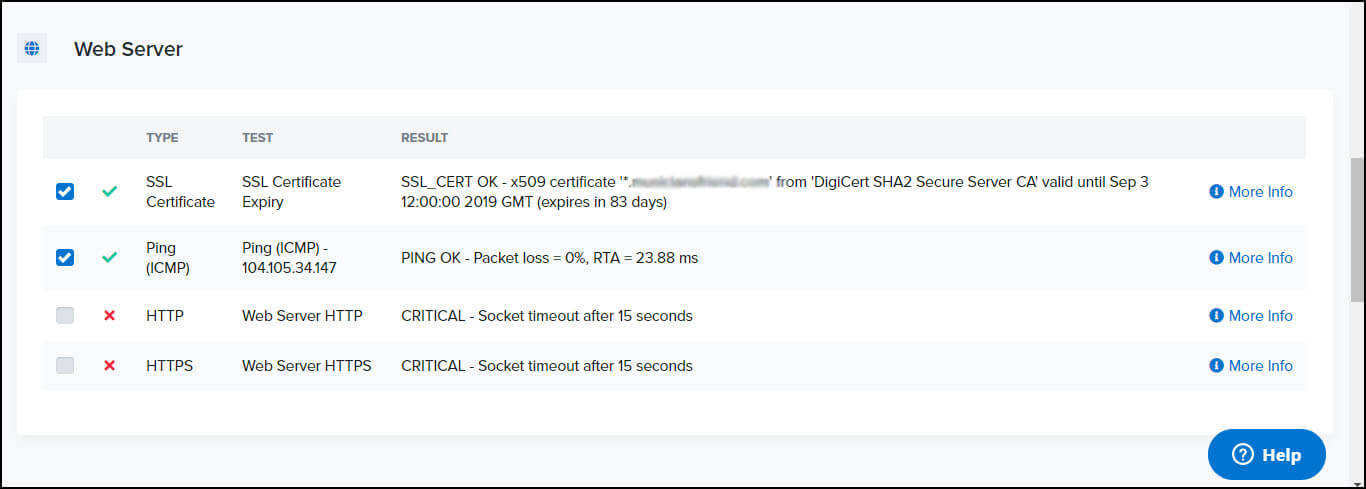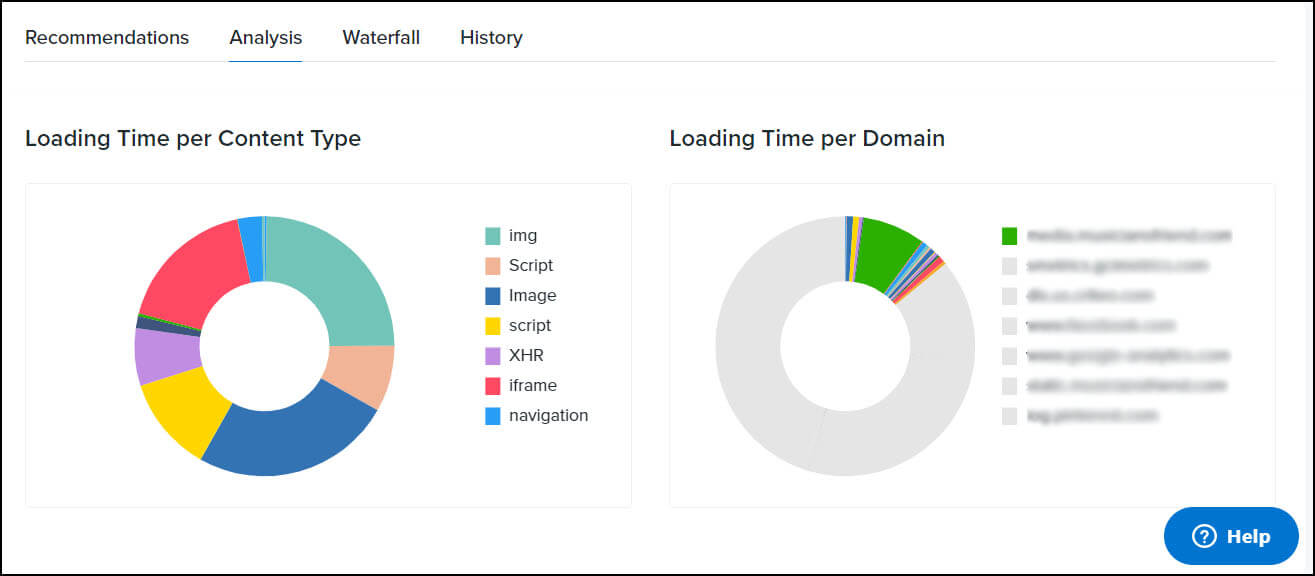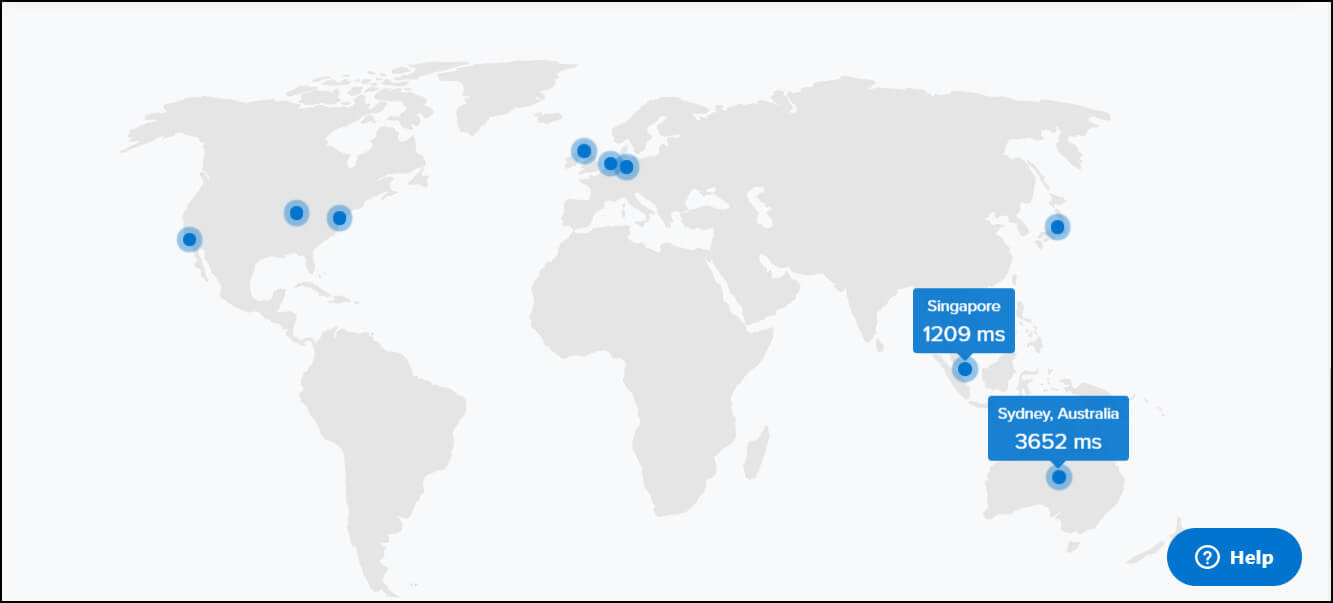
Stop Focusing on Time to First Byte and Do This Instead
Metrics are the lifeblood of every data-driven decision. Question after question on forums like Reddit, Stack Overflow and other IT communities ask which metrics teams should focus on for improving website speed and end-user experience.
There’s a push in web development circles to focus on Time to First Byte (TTFB) to measure and improve website speed. But every viewpoint has its opposition. Today we’re going to talk about why TTFB is important — yet why it shouldn’t be the most important metric in your analysis. We’ll also talk about specific strategies that can improve website speed and give granular insights into end-user experience.
Let’s dive in.
Table of Contents
- Why TTFB is important
- Does TTFB Affect SEO?
- TTFB Measurement Alternatives: A Balanced Approach
- Testing Site & Page Speed
- Continual uptime monitoring keeps IT headaches to a minimum
- Website test methods for accurate page speed insights
- How to improve first byte time and overall website speed
- Key takeaways
Why Time To First Byte IS Important
Time to first byte is an important metric for determining when a user’s browser receives the first byte of data from your server. Until a browser receives data, the webpage cannot begin rendering and users may click away. This affects both SEO and user experience.
Online businesses in competitive spaces are laser-focused on website speed. In these fast-paced environments, there’s a tendency to focus on one metric above all others. PromotionCode is an online business that experiences extreme competition in the online coupon space. They work with over 15,000 retailers annually.
Mike Catania, CTO of PromotionCode says, “TTFB is the performance metric we consider the most significant.”
Content Management Systems (CMS) like Drupal and WordPress offer tons of flexibility and functionality. Even though 34% of all websites use WordPress, every tweak made to the CMS can severely impact loading time. This is especially true with WordPress themes and plugins.
The more functionality developers add to a website, the more these changes can decrease TTFB and page load time.
Also, websites that aren’t continually purged of unused components (old plugins, themes, etc.) can experience performance issues.
“Complexity really clashes with performance, so removing unused technology components like old plugins can help,” says Taz Lake of Brightmill.
Because customers expect websites to load fast, testing and monitoring helps tech teams continually improve website speed to keep up with customer expectations.
The problem with focusing on TTFB to improve website speed
If IT teams focus 100% of their efforts on TTFB, they are failing to take the big picture into account.
According to hosting company Nexcess, “TTFB actually measures the time it takes for the first HTTP response to be received, not the time it takes for the page itself to be sent.”
Since HTTP responses can be sent and received by a browser fairly quickly, TTFB may not relate to page load time at all. Page speed tests sometimes show TTFB measurements as higher than total page load time, which is a red flag that something isn’t right with TTFB measurement.
How can a page load before a user’s browser receives a response from your web server?
Does Time to First Byte Affect SEO?
Other issues with reliance on TTFB are in regards to SEO. Over and over again, experts state slow-loading pages will make your organic traffic tank and no one will even know your website exists.
While tiny fractions of a second won’t affect SEO, if your site is taking longer than 10 seconds to load (depending on your industry), you are in deep trouble. Since TTFB measurements aren’t always related to page speed, focusing on them to help with page speed is a no-no.
If you’re monitoring organic traffic on a regular basis and see a sudden decline, your site may be on a Google blacklist. The best course of action would be to work on getting your site removed first, and then see how things improve before making adjustments to speed up site load time.
Uptime.com website monitoring includes a blacklist check in your subscription and as part of the Domain Health check.
TTFB Measurement Alternatives: A Balanced Approach
Instead of treating one metric as the holy grail when it comes to measuring speed, try a more balanced approach.
IT pros use a combination of testing and monitoring to keep an eye on website speed. Testing allows you to check for problems immediately. Monitoring helps teams keep tabs on performance, so problems can be caught before they turn into nightmares.
Testing Site & Page Speed
In the testing phase, focus on a group of metrics that provides the most accurate information possible.
The following Uptime.com tests provide a wealth of data to allow IT teams to make informed and accurate decisions:
- Domain Health: measures response times from DNS nameservers, ICMP, HTTP/S responses (see screenshot below for a peek into the test for Uptime.com users)

- Speed Tests: Provides an overall look at website speed, including recommendations for improvement, a detailed analysis of all assets on a particular page, waterfall view, and history of previous tests.

Analysis from Uptime.com Speed Test
- Global Uptime Tests: Provides nine metrics from various servers worldwide. The world map below provides a visual representation of where the tests are being run from.

All three of these tests are available from the Uptime.com homepage for the general public in the Free Tools menu. Uptime.com users can track the results of these tests over time to detect latency issues.
Want to seamlessly integrate testing and monitoring? Check out Uptime.com for a 21-day free trial, no credit card required.
Continual Uptime Monitoring Keeps IT Headaches to a Minimum
There are several aspects to website infrastructure monitoring that can help you keep a watchful eye on when problems may be approaching.
David Sanchez of Mammoth Web Solutions states: “You have to continuously monitor your domain, because every new integration can affect domain performance.”
What about website monitoring in relation to TTFB? Our experts at Uptime.com see the importance of it during testing, but with monitoring there are more important aspects to worry about.
Here’s some of the monitoring functions of Uptime.com that help you make sure everything is running smoothly on a day-to-day basis:
- Ping (ICMP protocol): A simple test that checks the return path of a signal sent to and from your server. Runs at one-minute intervals at minimum for rapid alerting of downtime.
- Real User Monitoring (RUM): Provides insights based on actual user data across devices, locations, and can alert contacts when conditions are less than optimal. A passive form of monitoring, often compared to synthetic monitoring (see Transaction Checks).
- HTTP/S availability: Gives insights into accessibility for a website or page, and verifies status is 200 “OK”. Runs at one-minute intervals at minimum for rapid alerting of downtime.
- Transaction Checks: For specific actions a user takes on a website like creating an account. Even though your site may be fast, these “transactions” may take so long to occur that users leave your site. Transaction checks use synthetic (active) monitoring methods to test these critical elements of your site.
Website Test Methods for Accurate Page Speed Insights
The testing experts at BlazeMeter recommend developers, QA engineers, and DevOps pros perform three types of tests:
-
Performance tests
-
Page Load Tests
-
Stress Tests
Each one of these tests has specific use cases and reasons to use them. Testers (no matter their job title) who are working in an agile environment and spend time looking at waterfalls should continuously test infrastructure after major updates, bug fixes, and similar conditions.
How to Improve First Byte Time and Overall Website Speed
Even though TTFB isn’t the only metric website owners should focus on, it is a critical first step in creating the fastest website possible.
There’s a lot of advice out there about how to increase website speed. Some advice is basic, such as compressing images and staying away from hero sliders, while other tips can get very specific.
We’ve collected the following tips from website owners and CTOs to help your site load faster if speed is an issue.
1. Choose a reliable web host
“Fast loading speed starts with a great website host. That’s the #1 factor in speeding up the TTFB. Use Cloud hosting with companies like WPX, Kinsta, AWS or Google Cloud Hosting for fast loading around the world.”
— David Sanchez, Founder, Mammoth Web Solutions
2. Enable caching AND configure it properly
“WordPress isn’t fast out of the box. We’ve found caching is the key to consistent speed. The most cutting edge technique we use is edge caching. Cloudflare Workers is incredibly fast server-side javascript. Pages are cached on CDN Edge servers, and many requests never even touch our origins. The price is low for up to 10 million requests, and it’s perhaps the most important tool we use.”
— David Payette, Founder, Upphone.com
3. Continually monitor your site after testing to ensure it stays as fast as possible.
“We’ve improved our TTFB several ways, some of which were very low-hanging fruit, such as consolidating the CDNs for third-party scripts to reduce DNS lookup times and optimizing the caching both on our webserver and the CDN.“ — Mike Catania, CTO, PromotionCode.org
Key Takeaways
Time to First Byte is an important metric as long as it isn’t the only metric you’re focused on. There are relevant arguments on both sides of the controversy, but keep these key points in mind:
- A balanced approach to website speed is to invest in both testing and monitoring
- TTFB stats may not be accurate, since they are not dealing directly with rendering
- Group TTFB metrics with other stats closely related to your purpose (For SEO look at Bounce Rate, for speed look at page load time, etc.)
Uptime.com understands the need to invest in both monitoring and testing, which is why we offer both. By combining these two powerful tools, you have a complete solution to test, monitor and tweak your web infrastructure as needed.
Minute-by-minute Uptime checks.
Start your 14-day free trial with no credit card required at Uptime.com.
 Uptime.com Blog
Uptime.com Blog


